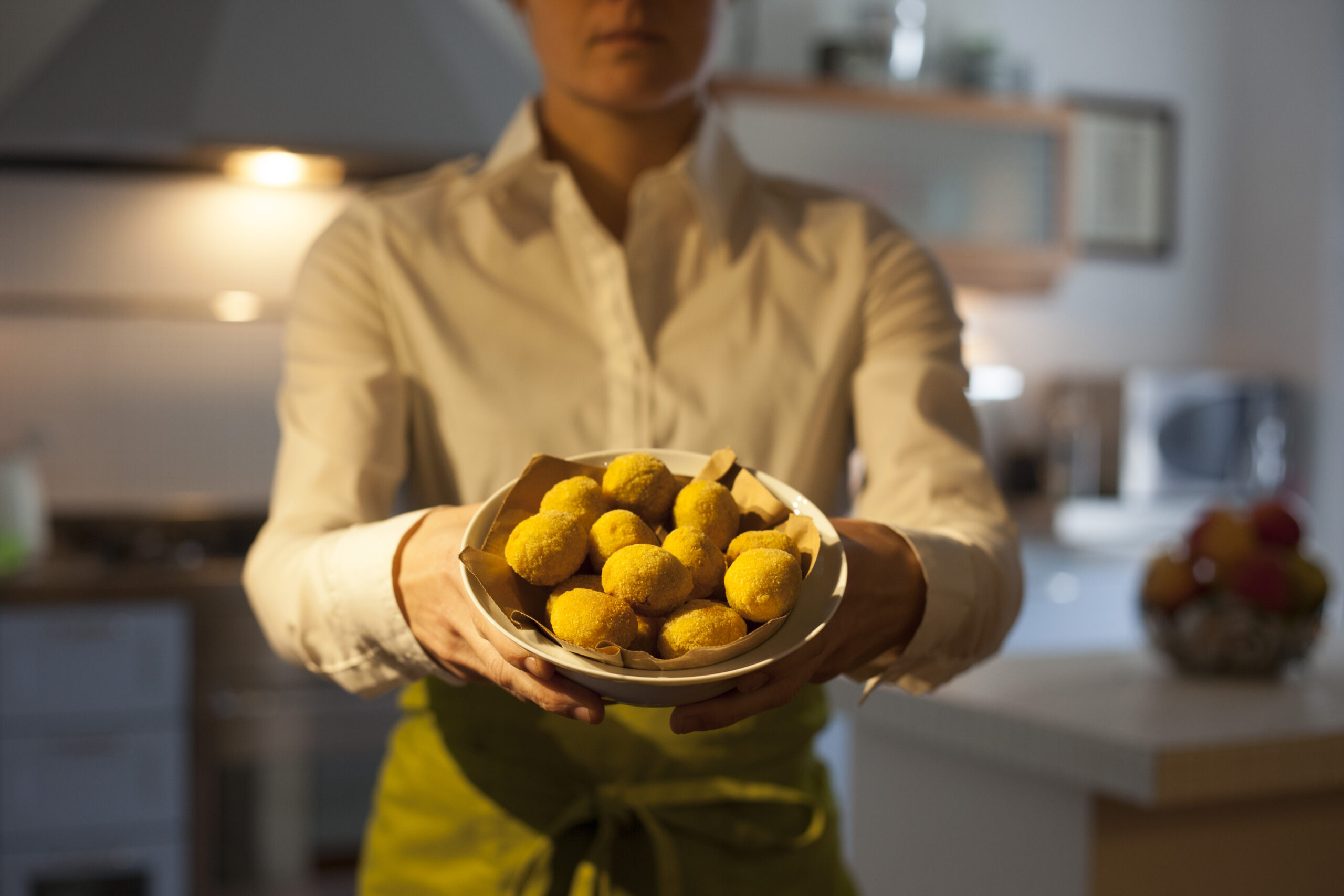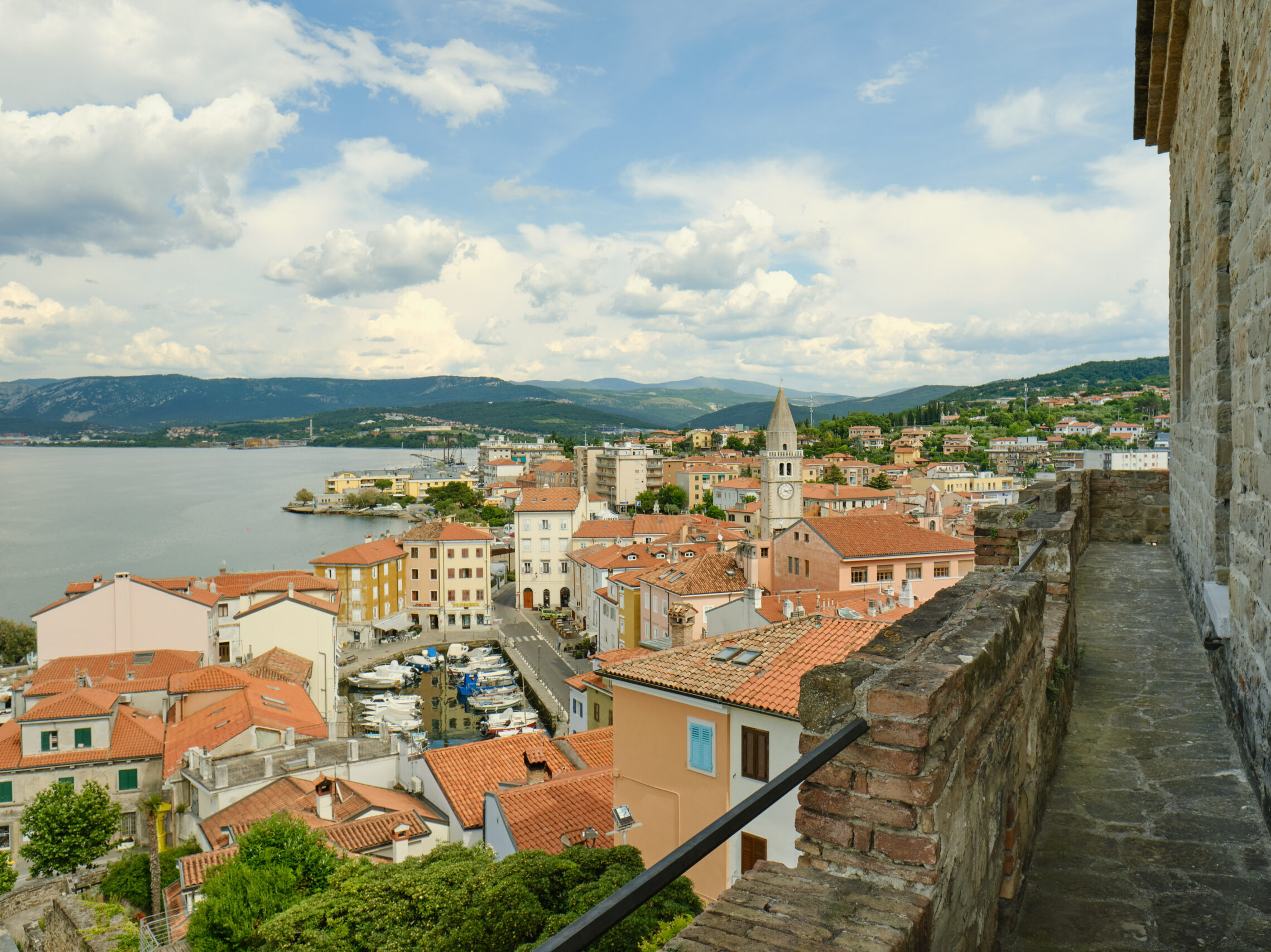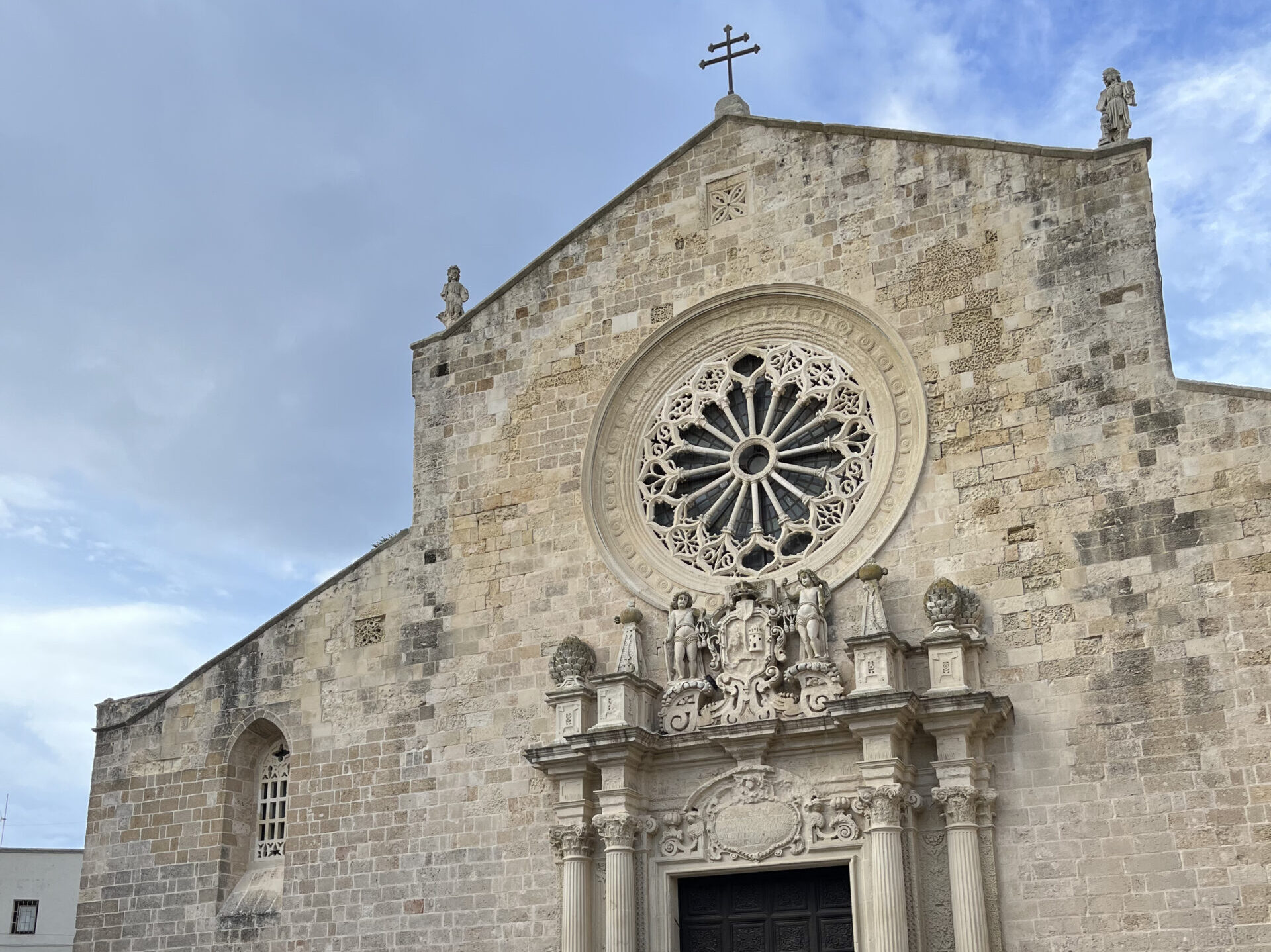Symbol of a land and a centuries-old tradition, the Oliva Ascolana del Piceno DOP holds within each bite the care of the land, the wisdom of local farmers, and the excellence of Italian cuisine. From its meticulous cultivation to the time-honored recipe of its celebrated stuffed version, this protected delicacy tells a story of identity, craftsmanship, and intergenerational pride.
Some flavors are more than just food – they carry the weight of memory, of place, of heritage. The Oliva Ascolana del Piceno, a hallmark of Marche’s culinary tradition and a beloved staple of Central Italy, is one such flavor.
Its story begins in the 19th century, when chefs in Ascoli’s noble households began stuffing tender green olives with spiced meats to create a surprisingly rich appetizer. Over time, the recipe moved from aristocratic kitchens to family tables and eventually to restaurants. In 2005, it was officially awarded Protected Designation of Origin (DOP) status by the European Union – a recognition of its unique character and cultural significance.
But behind each olive lies much more than taste: it’s a world of precise rules, rural expertise, and deep respect for tradition and territory.
To bear the name Oliva Ascolana del Piceno DOP, every stage of production must take place within a carefully defined area between the provinces of Ascoli Piceno and Teramo. The local soils – limestone, clay, or sandstone – and the mild Adriatic climate give the olives their distinct qualities: soft, flavorful flesh and a pulp-to-pit ratio greater than 4 to 1.
The variety used, Ascolana Tenera, is grown in specialized groves with evenly spaced, sunlit, and well-ventilated trees. Harvesting happens between September 10 and October 20, with a yield capped at 70 quintals per hectare. And then comes the transformation – a process governed by a strict rulebook that safeguards both authenticity and excellence.
The first step after harvesting is de-bittering – removing the fruit’s natural bitterness – which must occur within 48 hours. The olives are immersed in sodium hydroxide for 8 to 12 hours, followed by thorough rinsing and natural fermentation in brine. No chemical shortcuts here: just water, salt (8–10%), and time.
The result? Smooth-skinned olives, pale green in color, crisp to the bite, with a delicate aroma and a gentle, lingering bitterness – perfect as an appetizer or aperitivo.
But it’s in their stuffed form that these olives truly shine – a culinary jewel crafted by hand. The filling is a blend of beef, pork, and a small amount of poultry, slow-cooked with onion, carrot, celery, white wine, and herbs. Once cooled, the meat is finely chopped and mixed with grated aged cheese, egg, and a touch of nutmeg.
Each olive is carefully pitted by hand, stuffed with the filling, coated in flour, egg, and breadcrumbs, and fried until perfectly golden and crisp.
At the time of sale, the finished product must be slightly irregular in shape, with a firm yet tender bite, a distinctive yet delicate aroma, and a coating that clings snugly to the olive. A one-kilo serving contains between 65 and 95 olives – each the result of precision, patience, and deep-rooted passion.
To ensure authenticity and transparency across the entire supply chain, the Italian Ministry of Agriculture formally recognized, in March 2018, the Consortium for the Protection and Promotion of Oliva Ascolana del Piceno DOP, headquartered in Ascoli Piceno.
The Consortium oversees all aspects of production – from grove to plate – maintaining official lists of growers, processors, and packagers, while guarding against misuse and imitation. Only olives that meet strict criteria may carry the DOP name. Labels must read “Oliva Ascolana del Piceno” without vague or misleading qualifiers like “authentic” or “genuine.”
Today, the Oliva Ascolana del Piceno is far more than a local specialty. It’s a model of how Italy’s agri-food heritage can be protected, promoted, and enjoyed in a modern context – where flavor goes hand in hand with respect for rules, environment, and people.
Whether served hot in a trattoria in Ascoli’s old town or shared at home during a celebration, these olives remain a symbol of conviviality and craftsmanship, telling – with each bite – a story that’s still being written.




